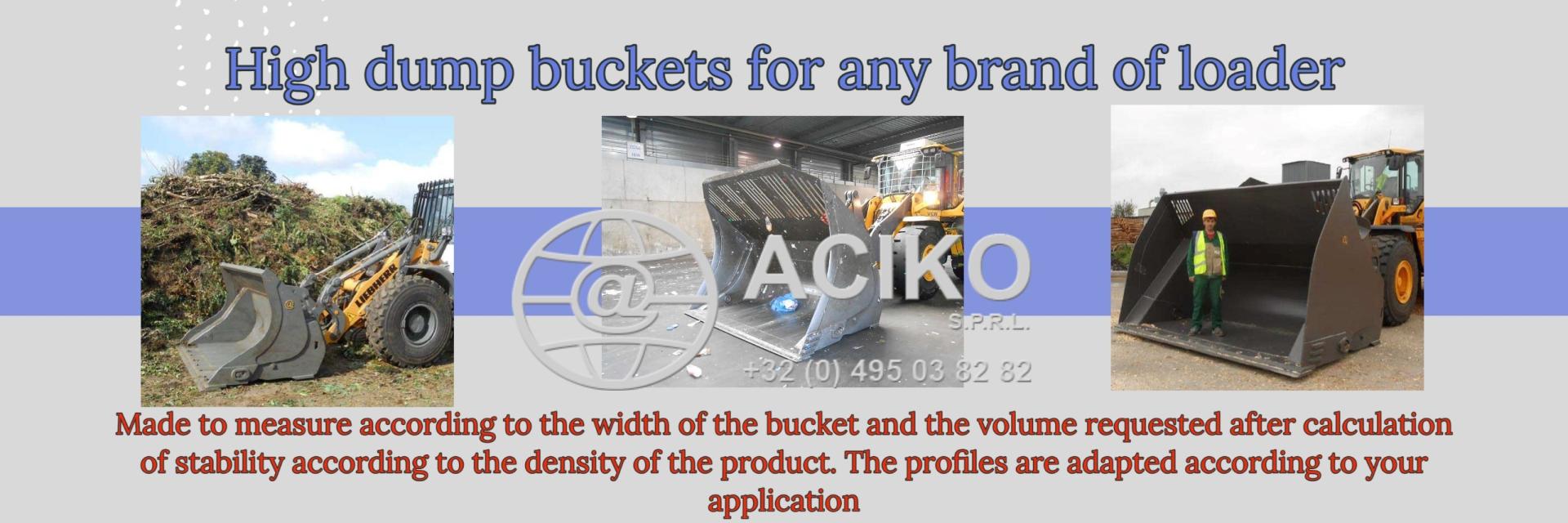R.E.News future Technology-Smart Concrete Testing with GPR and Deep Learning to Transform Rebar Detection
 29/09/25-FR-English-NL-footer
29/09/25-FR-English-NL-footer
Smart Concrete Testing : quand le GPR et le Deep Learning révolutionnent la détection des armatures
 Image-R.E.News©
Image-R.E.News©
Depuis plus d’un siècle, le béton armé constitue la colonne vertébrale de nos infrastructures modernes. Mais évaluer sa solidité reste un défi majeur. Les méthodes traditionnelles reposent souvent sur des tests destructifs, qui fragilisent les structures qu’ils sont censés protéger. Coûteux, chronophages et limités en précision, ils ne correspondent plus aux exigences actuelles en matière de sécurité et de durabilité.
Face à ces limites, le secteur de la construction s’est tourné vers des techniques non destructives (NDT). Parmi elles, le radar à pénétration de sol (Ground Penetrating Radar, GPR) s’est imposé comme un outil de choix pour localiser les armatures en acier. Mais si le GPR permettait déjà de « voir » dans le béton, déterminer avec précision le diamètre des barres restait un défi, en raison de la complexité des signaux. C’est ici qu’intervient l’intelligence artificielle – et plus encore, le deep learning.
Une avancée majeure venue du Caire
À l’Université du Caire, une équipe de chercheurs menée par Mostafa Khedr, Mahmoud Metawie et Mohamed Marzouk a franchi une étape décisive. Leur étude, publiée dans Frontiers of Structural and Civil Engineering, propose un cadre méthodologique inédit combinant GPR et réseaux de deep learning pour classer les diamètres des armatures avec une précision jamais atteinte.
Leur approche se décline en quatre étapes clés :
Constitution d’un jeu de données mêlant expérimentations et relevés de terrain.
Prétraitement des signaux GPR pour mettre en évidence les signatures caractéristiques des barres.
Application d’algorithmes de deep learning pour identifier et classer les diamètres.
Transfert de connaissances afin d’améliorer les performances sur de nouveaux jeux de données.
Pourquoi le diamètre des armatures est crucial
Connaître le diamètre des barres d’acier ne relève pas du détail technique. C’est un paramètre fondamental pour calculer la capacité portante, prévoir la durabilité et planifier la maintenance d’un ouvrage. Dans les ponts, tunnels, gratte-ciels ou barrages, une erreur de classification peut entraîner des réparations coûteuses, voire des défaillances catastrophiques.
Avec une meilleure précision, les ingénieurs disposent d’une image plus fiable de la structure interne du béton, ce qui leur permet de prendre des décisions éclairées en matière de renforcement, de rénovation ou de remplacement.
YOLO v8 en tête de course
Les chercheurs ont testé trois modèles de deep learning : Faster R-CNN, YOLO v7 et YOLO v8. Ce dernier s’est imposé comme le plus performant, atteignant un taux de précision global de 97,2 % pour les diamètres Ø12, Ø16, Ø18 et Ø20, y compris sur des données issues de véritables chantiers.
Le verdict est sans appel : l’intégration du GPR et du deep learning ouvre une nouvelle ère pour l’évaluation structurelle.
Une tendance mondiale en pleine accélération
Le marché mondial du NDT devrait passer de 23,1 milliards USD en 2024 à près de 33 milliards USD en 2029 (MarketsandMarkets). Partout, les infrastructures vieillissantes et la pression réglementaire poussent à adopter des méthodes plus rapides et plus fiables.
En Europe, les effondrements de ponts ont accéléré les investissements dans les outils NDT assistés par IA.
En Asie, les projets de « smart cities » intègrent déjà GPR et IA pour un suivi en temps réel des ouvrages urbains.
Aux États-Unis, le plan de renouvellement des infrastructures consacre une place centrale aux technologies d’inspection non destructives.
Avec cette étude, l’Égypte démontre qu’elle aussi contribue activement à cette révolution technologique, en offrant une approche de pointe qui peut inspirer bien au-delà de ses frontières.
Des bénéfices concrets pour ingénieurs et décideurs
Pour les ingénieurs, les avantages sont immédiats : inspections plus rapides, réduction des erreurs humaines, coûts d’entretien limités et archivage numérique fiable des résultats.
Pour les décideurs et régulateurs, cette technologie ouvre la voie à des standards de sécurité plus élevés, sans explosion des budgets de contrôle.
Et demain ?
Les perspectives sont vastes : élargir la classification à des barres de plus grand diamètre, intégrer l’imagerie 3D et les jumeaux numériques, combiner le GPR à d’autres techniques NDT comme la tomographie ultrasonore ou l’imagerie infrarouge.
NJC.© Info Integrated Ground Penetrating Radar and Deep Learning Approach for Rebar Diameter Classification in Concrete Elements
----------------------------------------------------------------------------------------------------------------
 29/09/25-English
29/09/25-English
Smart Concrete Testing: When GPR and Deep Learning Revolutionize Reinforcement Detection
 Image-R.E.News©
Image-R.E.News©
For over a century, reinforced concrete has formed the backbone of our modern infrastructure. But assessing its strength remains a major challenge. Traditional methods often rely on destructive testing, which weakens the structures they are designed to protect. Costly, time-consuming, and lacking in accuracy, they no longer meet today's safety and durability requirements.
Faced with these limitations, the construction industry has turned to non-destructive testing (NDT) techniques. Among them, ground penetrating radar (GPR) has emerged as a tool of choice for locating steel reinforcement. But while GPR already made it possible to "see" into concrete, accurately determining the diameter of the bars remained a challenge due to the complexity of the signals. This is where artificial intelligence—and even more so, deep learning—comes into play.
A major breakthrough from Cairo
At Cairo University, a team of researchers led by Mostafa Khedr, Mahmoud Metawie, and Mohamed Marzouk has reached a decisive milestone. Their study, published in Frontiers of Structural and Civil Engineering, proposes a novel methodological framework combining GPR and deep learning networks to classify rebar diameters with unprecedented accuracy.
Their approach is divided into four key steps:
Construction of a dataset combining experiments and field surveys.
Preprocessing of GPR signals to highlight the characteristic signatures of the bars.
Application of deep learning algorithms to identify and classify diameters.
Knowledge transfer to improve performance on new datasets.
Why rebar diameter is crucial
Knowing the diameter of steel bars is not a technical detail. It is a fundamental parameter for calculating the load-bearing capacity, predicting durability, and planning the maintenance of a structure. In bridges, tunnels, skyscrapers, or dams, a classification error can lead to costly repairs or even catastrophic failures.
With greater accuracy, engineers have a more reliable picture of the internal structure of the concrete, allowing them to make informed decisions regarding reinforcement, renovation, or replacement.
YOLO v8 Leads the Race
The researchers tested three deep learning models: Faster R-CNN, YOLO v7, and YOLO v8. The latter emerged as the most efficient, achieving an overall accuracy rate of 97.2% for diameters Ø12, Ø16, Ø18, and Ø20, including on data from real construction sites.
The verdict is clear: the integration of GPR and deep learning opens a new era for structural assessment.
A Global Trend in Acceleration
The global NDT market is expected to grow from USD 23.1 billion in 2024 to nearly USD 33 billion in 2029 (MarketsandMarkets). Aging infrastructure and regulatory pressure are driving the adoption of faster and more reliable methods.
In Europe, bridge collapses have accelerated investments in AI-assisted NDT tools.
In Asia, smart city projects are already integrating GPR and AI for real-time monitoring of urban structures.
In the United States, the infrastructure renewal plan is devoting a central place to non-destructive inspection technologies.
With this study, Egypt demonstrates that it too is actively contributing to this technological revolution, offering a cutting-edge approach that can inspire well beyond its borders.
Concrete benefits for engineers and decision-makers
For engineers, the benefits are immediate: faster inspections, reduced human error, limited maintenance costs, and reliable digital archiving of results.
For decision-makers and regulators, this technology paves the way for higher safety standards, without exploding inspection budgets.
And tomorrow?
The prospects are vast: expanding classification to larger diameter bars, integrating 3D imaging and digital twins, and combining GPR with other NDT techniques such as ultrasonic tomography or infrared imaging.
NJC.© Info Integrated Ground Penetrating Radar and Deep Learning Approach for Rebar Diameter Classification in Concrete Elements
----------------------------------------------------------------------------------------------------------------
 29/09/25-NL
29/09/25-NL
Slimme betontesten: wanneer GPR en deep learning de wapeningsdetectie revolutioneren
 Image-R.E.News©
Image-R.E.News©
Gewapend beton vormt al meer dan een eeuw de ruggengraat van onze moderne infrastructuur. Maar het beoordelen van de sterkte ervan blijft een grote uitdaging. Traditionele methoden vertrouwen vaak op destructief onderzoek, wat de constructies die ze moeten beschermen verzwakt. Ze zijn kostbaar, tijdrovend en onnauwkeurig en voldoen niet meer aan de huidige veiligheids- en duurzaamheidseisen.
Geconfronteerd met deze beperkingen is de bouwsector overgestapt op niet-destructief onderzoek (NDT). Grondradar (GPR) is daar een van de meest gebruikte hulpmiddelen voor het lokaliseren van stalen wapening. Maar hoewel GPR het al mogelijk maakte om in beton te "kijken", bleef het nauwkeurig bepalen van de diameter van de staven een uitdaging vanwege de complexiteit van de signalen. Dit is waar kunstmatige intelligentie – en nog meer deep learning – een rol speelt.
Een belangrijke doorbraak uit Caïro
Aan de Universiteit van Caïro heeft een team onderzoekers onder leiding van Mostafa Khedr, Mahmoud Metawie en Mohamed Marzouk een beslissende mijlpaal bereikt. Hun studie, gepubliceerd in Frontiers of Structural and Civil Engineering, stelt een nieuw methodologisch raamwerk voor dat GPR en deep learning-netwerken combineert om wapeningsdiameters met ongekende nauwkeurigheid te classificeren.
Hun aanpak is onderverdeeld in vier belangrijke stappen:
Constructie van een dataset die experimenten en veldonderzoek combineert.
Voorbewerking van GPR-signalen om de karakteristieke kenmerken van de staven te benadrukken.
Toepassing van deep learning-algoritmen om diameters te identificeren en te classificeren.
Kennisoverdracht om de prestaties op nieuwe datasets te verbeteren.
Waarom de wapeningsdiameter cruciaal is
Het kennen van de diameter van stalen staven is geen technisch detail. Het is een fundamentele parameter voor het berekenen van het draagvermogen, het voorspellen van de duurzaamheid en het plannen van het onderhoud van een constructie. Bij bruggen, tunnels, wolkenkrabbers of dammen kan een classificatiefout leiden tot kostbare reparaties of zelfs catastrofale storingen.
Met een grotere nauwkeurigheid hebben ingenieurs een betrouwbaarder beeld van de interne structuur van het beton, waardoor ze weloverwogen beslissingen kunnen nemen over wapening, renovatie of vervanging.
YOLO v8 loopt voorop
De onderzoekers testten drie deep learning-modellen: Faster R-CNN, YOLO v7 en YOLO v8. Deze laatste kwam als meest efficiënt naar voren, met een algehele nauwkeurigheid van 97,2% voor diameters Ø12, Ø16, Ø18 en Ø20, inclusief gegevens van echte bouwplaatsen.
Het oordeel is duidelijk: de integratie van GPR en deep learning luidt een nieuw tijdperk in voor structurele beoordeling.
Een wereldwijde trend in versnelling
De wereldwijde NDT-markt zal naar verwachting groeien van 23,1 miljard dollar in 2024 tot bijna 33 miljard dollar in 2029 (MarketsandMarkets). Verouderde infrastructuur en regeldruk stimuleren de invoering van snellere en betrouwbaardere methoden.
In Europa hebben ingestorte bruggen geleid tot een versnelde investering in AI-ondersteunde NDT-tools.
In Azië integreren smart city-projecten al GPR en AI voor realtime monitoring van stedelijke structuren.
In de Verenigde Staten staat in het plan voor infrastructuurvernieuwing een centrale rol weggelegd voor niet-destructieve inspectietechnologieën.
Met deze studie toont Egypte aan dat ook het land actief bijdraagt aan deze technologische revolutie en een geavanceerde aanpak biedt die tot ver buiten de landsgrenzen kan inspireren.
Concrete voordelen voor ingenieurs en besluitvormers
Voor ingenieurs zijn de voordelen direct merkbaar: snellere inspecties, minder menselijke fouten, beperkte onderhoudskosten en betrouwbare digitale archivering van resultaten.
Voor besluitvormers en regelgevers maakt deze technologie de weg vrij voor hogere veiligheidsnormen, zonder dat inspectiebudgetten exploderen.
En morgen?
De vooruitzichten zijn enorm: uitbreiding van de classificatie naar staven met grotere diameters, integratie van 3D-beeldvorming en digitale tweelingen, en combinatie van GPR met andere NDT-technieken zoals ultrasone tomografie of infraroodbeeldvorming.
NJC.© Info Integrated Ground Penetrating Radar and Deep Learning Approach for Rebar Diameter Classification in Concrete Elements
--------------------------------------------------------------------------------------------------------------
Date de dernière mise à jour : 26/09/2025
















